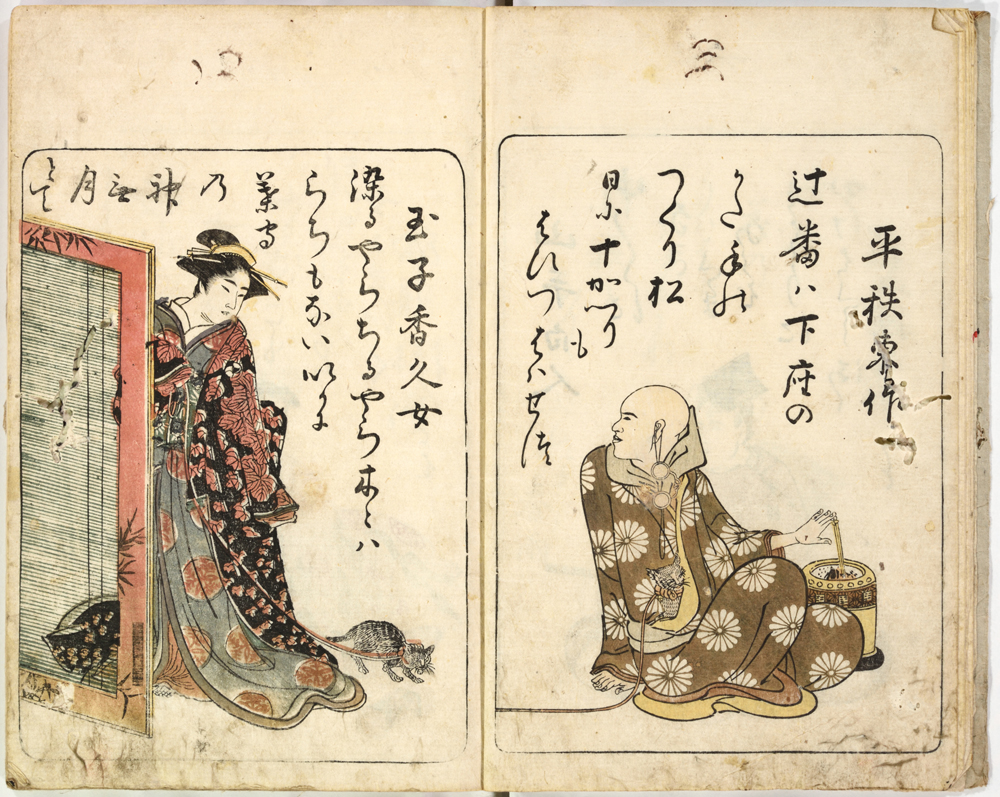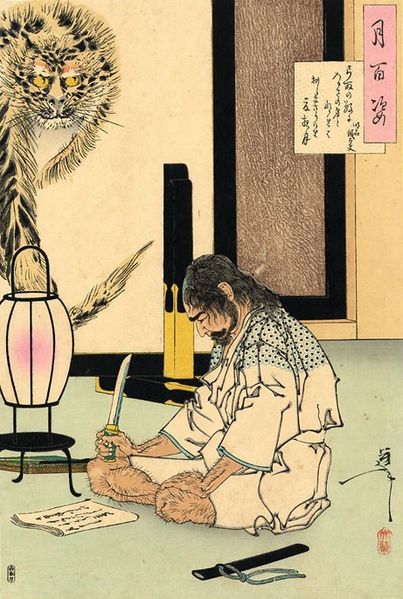By lyuesword | 17 May 2022 | 0 Comments
SEPPUKU: A Samurai's Death with Honor
Seppuku is the samurai’s honorable way of dying through his own hand. The samurai bushido honor code explicitly states that a samurai can perform seppuku voluntarily rather than fall into the hands of the enemy and likely be subjected to torture, or because he has brought shame to himself. It was also a form of capital punishment for a samurai who had committed a serious offense.

Seppuku (切腹), “self-disembowelment,” also known as “hara-kiri” or belly-cutting, involves plunging a short sword into the left side of the abdomen, pulling the sword all the way to the right side and then turning it upwards, making it practically impossible for the wound to close and heal. It was considered exemplary to make a followup stab below the chest and press the sword downwards to cut across the initial cut, and finally to pierce one’s throat to culminate the seppuku ritual. This ritual act of taking one’s own life was thought to be a definitive demonstration of a samurai’s courage, strong resolve, and self-control, for seppuku is an extremely painful, slow way to die. It showed a true samurai’s sincerity of purpose.
There were instances when a samurai would perform voluntary seppuku to show his loyalty to his lord by following him to his death, as a form of protest against his superior or some government policy, or to atone for failing to do his duties. Obligatory seppuku was a method of capital punishment that spared the samurai the disgrace of being beheaded by a common executioner. Seppuku was finally abolished in 1873.
General Akashi Gidayu preparing to commit seppuku after losing a battle for his master in 1582.
During the Edo Period (1600–1867), seppuku became a more detailed ritual. Planned seppuku was usually performed in front of an audience. A samurai was bathed, clothed in white robes, and served his favorite food as his final meal. When he was finished, he readied his knife, “tantō,” or short sword, “wakizashi,” the blade partially covered with cloth so he would not cut his hand and lose his grip.
The samurai would also be dressed ceremonially with his sword placed in front of him and then he would prepare to write his death poem. A samurai would usually be assisted by his chosen second, “kaishakunin,” who would be standing close by. The chosen second performed kaishaku, a cut that decapitated the samurai.
Jigaki is a form of ritual suicide by wives of samurai who have committed seppuku or have brought dishonor to their name. Jigaki involves slicing the arteries of the neck with one stroke for a quick and certain death, unlike the slow and painful death of seppuku.
It was also performed by women to preserve one’s honor in instances of military defeat to avoid rape. According to the bushido, it is an example of a truly determined, brave, and honorable way to die.
Want a unique sword? Feel free to contact us:
Email: lyuesword@hotmail.com
Website: www.lyuesword.com
Custom Sword Page: www.lyuesword.com/Custom-Sword/customization-options/Create-Your-Own-Swords

Seppuku (切腹), “self-disembowelment,” also known as “hara-kiri” or belly-cutting, involves plunging a short sword into the left side of the abdomen, pulling the sword all the way to the right side and then turning it upwards, making it practically impossible for the wound to close and heal. It was considered exemplary to make a followup stab below the chest and press the sword downwards to cut across the initial cut, and finally to pierce one’s throat to culminate the seppuku ritual. This ritual act of taking one’s own life was thought to be a definitive demonstration of a samurai’s courage, strong resolve, and self-control, for seppuku is an extremely painful, slow way to die. It showed a true samurai’s sincerity of purpose.
There were instances when a samurai would perform voluntary seppuku to show his loyalty to his lord by following him to his death, as a form of protest against his superior or some government policy, or to atone for failing to do his duties. Obligatory seppuku was a method of capital punishment that spared the samurai the disgrace of being beheaded by a common executioner. Seppuku was finally abolished in 1873.
During the Edo Period (1600–1867), seppuku became a more detailed ritual. Planned seppuku was usually performed in front of an audience. A samurai was bathed, clothed in white robes, and served his favorite food as his final meal. When he was finished, he readied his knife, “tantō,” or short sword, “wakizashi,” the blade partially covered with cloth so he would not cut his hand and lose his grip.
The samurai would also be dressed ceremonially with his sword placed in front of him and then he would prepare to write his death poem. A samurai would usually be assisted by his chosen second, “kaishakunin,” who would be standing close by. The chosen second performed kaishaku, a cut that decapitated the samurai.
Jigaki is a form of ritual suicide by wives of samurai who have committed seppuku or have brought dishonor to their name. Jigaki involves slicing the arteries of the neck with one stroke for a quick and certain death, unlike the slow and painful death of seppuku.
It was also performed by women to preserve one’s honor in instances of military defeat to avoid rape. According to the bushido, it is an example of a truly determined, brave, and honorable way to die.
Want a unique sword? Feel free to contact us:
Email: lyuesword@hotmail.com
Website: www.lyuesword.com
Custom Sword Page: www.lyuesword.com/Custom-Sword/customization-options/Create-Your-Own-Swords
Leave a Reply
Your email address will not be published.Required fields are marked. *
